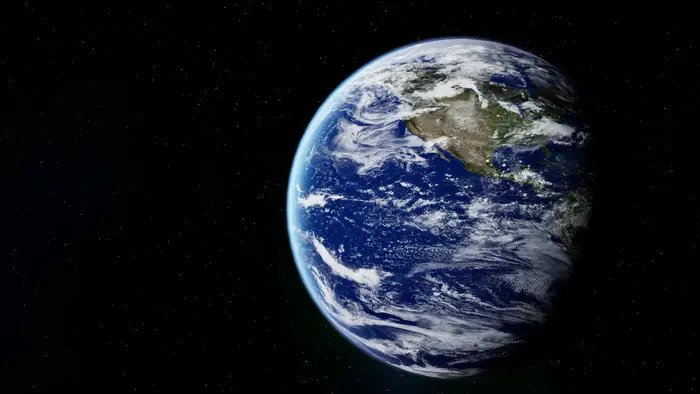Top 30 Fascinating Geographical Facts That Will Blow Your Mind
The globe is full with fascinating events, man-made constructions, and amazing natural wonders that highlight the richness and diversity of our planet. These natural wonders, which range from majestic mountains to enigmatic deserts, captivate the mind and emphasize the distinctive features of Earth.

Discover the mysteries of our remarkable world as we examine 30 of the most intriguing geographical facts in this blog.
1. Mount Everest Grows Every Year
Mount Everest, the highest mountain above sea level, grows approximately 4 millimeters annually due to tectonic activity. Currently standing at 8,848.86 meters, this giant is a product of the Indian and Eurasian plates colliding.
2. The Mariana Trench: Earth’s Deepest Point
The Mariana Trench in the Pacific Ocean reaches depths of about 36,070 feet (10,994 meters). The Challenger Deep, its deepest part, is so extreme that the pressure is over 1,000 times greater than at sea level.
3. The Amazon River Has No Bridges
Despite being the second-longest river in the world, the Amazon River flows through dense rainforests without a single bridge spanning its massive width. This is due to the remoteness of the region and the challenges of construction in such an environment.
4. Antarctica is a Desert
Though covered in ice, Antarctica is classified as a desert because of its extremely low precipitation levels, receiving only about 2 inches (50 millimeters) of precipitation annually.
5. Mount Chimborazo: The Closest Point to Space
While Mount Everest is the highest peak above sea level, Mount Chimborazo in Ecuador is the closest point to outer space due to Earth’s equatorial bulge. Its summit is over 2 kilometers farther from Earth’s core than Everest’s peak.
6. Russia is the Largest Country
Spanning 11 time zones, Russia is the largest country in the world, covering more than 17 million square kilometers. It’s so vast that it contains forests, tundras, mountains, and steppes.
7. The Dead Sea is the Lowest Point on Land
The shores of the Dead Sea, situated at 430.5 meters below sea level, are the lowest exposed point on Earth’s surface. Its high salinity makes it impossible for most life forms to survive there.
8. Canada Has the Most Lakes in the World
Canada boasts more than 2 million lakes, making up about 60% of the world’s freshwater reserves. Lake Superior alone is the largest freshwater lake by surface area in the world.
9. Africa’s Victoria Falls is the Largest Waterfall
Located on the Zambezi River, Victoria Falls is often considered the largest waterfall due to its combined width (1,708 meters) and height (108 meters).
10. The Sahara Desert is Expanding
The Sahara, the world’s largest hot desert, is growing by approximately 30 miles (48 kilometers) every year due to climate change and desertification.
11. The Great Barrier Reef: Visible from Space
The Great Barrier Reef in Australia, spanning over 2,300 kilometers, is the largest coral reef system on the planet and is even visible from outer space.
12. Iceland Has No Mosquitoes
Despite having plenty of water, Iceland is famously free of mosquitoes. Scientists attribute this to its cool climate and lack of stagnant water.
13. Lake Baikal is the Deepest Lake
Located in Siberia, Russia, Lake Baikal is the world’s deepest freshwater lake, plunging to depths of 1,642 meters. It’s also the oldest, estimated to be 25 million years old.
14. Greenland Has the World’s Largest Island
Greenland is the largest island globally that is not considered a continent, covering over 2.1 million square kilometers.
15. The Amazon Rainforest Produces 20% of Earth’s Oxygen
Often called “the lungs of the Earth,” the Amazon rainforest plays a crucial role in regulating global oxygen and carbon dioxide levels.
16. The Pacific Ocean Covers More Area Than All Land Combined
At 63 million square miles, the Pacific Ocean is larger than all the landmasses on Earth combined, making it the largest ocean on the planet.
17. Death Valley: The Hottest Place on Earth
Death Valley, California, holds the record for the highest temperature ever recorded on Earth: 56.7°C (134°F) in 1913.
18. Asia is Home to 60% of the World’s Population
Asia is the most populous continent, housing about 4.7 billion people, or roughly 60% of the global population.
19. Banff National Park is Canada’s Oldest National Park
Established in 1885, Banff National Park is a UNESCO World Heritage Site known for its stunning glacial lakes and mountainous landscapes.
20. The Atacama Desert is the Driest Place on Earth
Parts of Chile’s Atacama Desert have never recorded rainfall, making it the driest non-polar desert on Earth.
21. Australia: The Only Continent Without an Active Volcano
Australia is unique in that it does not have any active volcanoes due to its position in the middle of a tectonic plate.
22. Mount Fuji is a Sacred Symbol
Mount Fuji, Japan’s highest mountain at 3,776 meters, is considered sacred and a popular pilgrimage site for centuries.
23. Norway is Home to the World’s Deepest Fjord
Sognefjord in Norway plunges to depths of 1,308 meters, making it the deepest fjord in the world.
24. The Ganges is One of the Most Polluted Rivers
While sacred to millions, the Ganges River in India is also one of the most polluted due to industrial waste and religious practices.
25. The Himalayas are Still Growing
The Himalayan mountain range rises about 5 millimeters every year as the Indian plate continues to push northward into the Eurasian plate.
26. The Gulf Stream Heats Europe
The Gulf Stream, a powerful Atlantic Ocean current, is responsible for keeping Western Europe significantly warmer than other regions at similar latitudes.
27. Madagascar is an Island of Unique Biodiversity
About 90% of Madagascar’s wildlife, including lemurs and baobab trees, cannot be found anywhere else on Earth.
28. The Grand Canyon is 6 Million Years Old
Carved by the Colorado River, the Grand Canyon is one of the most iconic landscapes in the United States and is estimated to be 6 million years old.
29. The Nile River is the Longest in the World
Stretching over 6,650 kilometers, the Nile River flows through 11 countries, making it the longest river in the world.
30. Earth’s Magnetic Field is Shifting
Earth’s magnetic field, generated by movements in its liquid outer core, is slowly shifting. This phenomenon affects navigation systems and wildlife migration.

